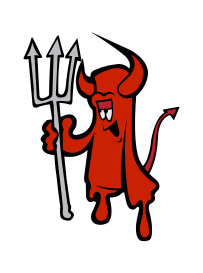Design flaw
Posted Mar 2, 2011 by anonymous | 79 views | 0 comments
I purchased a new Massey Ferguson Lawn Tractor Model#2718H-50' M#356777-0113E1 on 8/8/2003. Recently, 9/11/2006, the motor would not start or run. My Dealer 'Sosler's Garden & Farm Equipment' Tele#845 374-3621 was contacted and they picked up the tractor to service. Their findings were a cylinder head required replacing due to an overheating condition caused by nesting & debris within the engines cooling fins. Repairs were made at a cost of $529.97. The air cooling system was cleaned on a regular basis; however when they disassembled the blower housing additional nesting & debris was found. This was not visual to the eye until the housing was taken apart. Something that a regular consumer is not readily capable of performing. The nesting occurs when small animals (mice or chipmunks) entered silver dollar size holes built in the rear of the air cleaner body and then work their way into the rubber air intake into the engines air cooling system. I contacted Briggs & Stratton to complain about the design flaw and apply for both financial relief, remedy to prevent further nesting damage. Sosler Dealer recommended either exterminating the critters or parking the tractor in our garage instead of the shed. We live in the country, so exterminating is not a guarantee for all rodents that live within the area. The garage could also have mice there too! What next my living room to park the tractor! A wire shield placed over the air cleaner body holes would prevent the entry, however no one wants to address that issue as it may lead to design flaw issues. Sosler's stated they were unsure if any wire mesh would slow the air flow thus increasing the motors temperature. So they would be reluctant to install such without authorization from Briggs & Stratton. Briggs & Stratton issued a letter stating 'The holes in the air cleaner base are designed to allow air into the air cleaner cartridge. It is a sealed assembly. There is no pathway from the air cleaner to the cooling fins and cylinder head, for the rodents to travel. The area that was affected was restricted with debris and nesting material and this caused the engine to overheat. The engine is designed to have a certain clearance for air flow to travel under the blower housing/shroud and above the cooling fins so that the heat can be disbursed through the air currents. The repairs were warranted and necessary.' Sosler's stated that the letter was faulty in that the rodents could in fact travel from the air filter into the engine cooling fins for nesting. However, since Briggs & Stratton stated in the closing of their letter 'The repairs were warranted and necessary.', That authorized Sosler's to make the repairs, but that it was warranted work to be performed not warranty work, so I would be responsible and the matter closed. I now mow the lawn, wondering each time if there is any nesting debris hidden behind the blow housing which will again cause overheating and damage. There are no gauges on the tractor to let the owner know if an overheating problem exists. Disassembling the blower housing would take 1-2 hours each time, which is not a process designed for the normal homeowner. The owner's manual has a statement for the Air Cooling System –“Debris may clog the engine's air cooling system. Remove blower housing and clean area shown to prevent overheating and engine damage.” No instructions on how to disassemble the blower housing to comply. Brief but the needed relief from responsibility for Briggs & Stratton?


No comments yet. Be first!